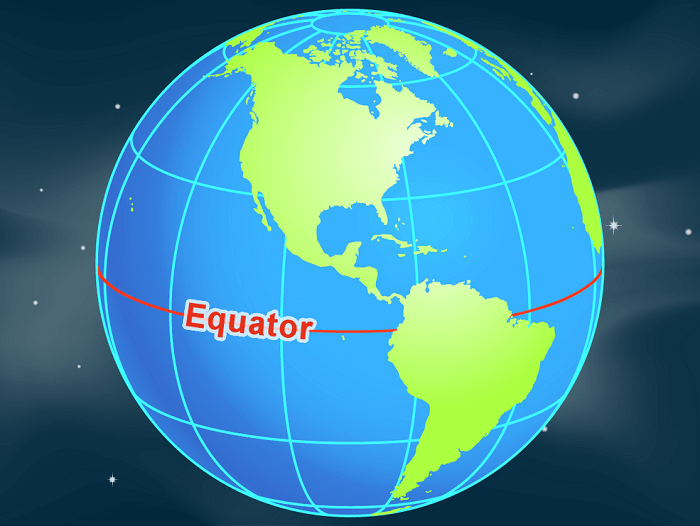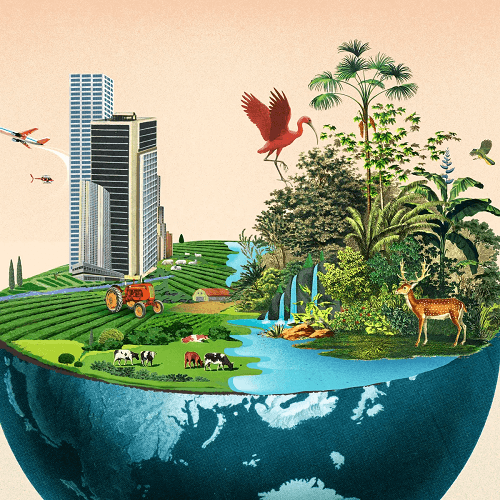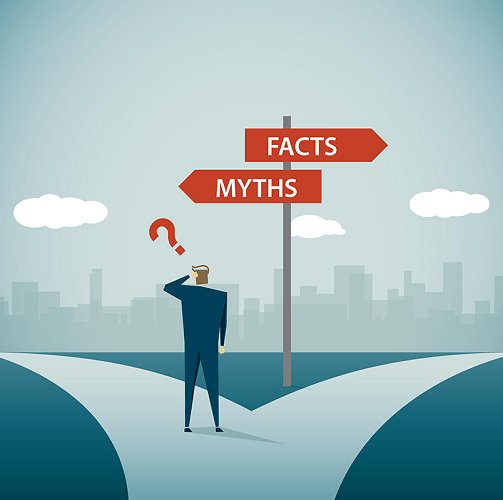Equator Definition
An idealized path that goes around a planet or other celestial body center is known as its Equator. At 0 degrees latitude, it lies midway between the North and South Pole. The Equator divides the two hemispheres, the Northern and the Southern. Important InformationThe Earth's center
Day and night seasons
Biodiversity
Crossing the Line
Facts and Myths
Myth:The equator strip measures 3 miles in width. The latitude of 0�0'0" fluctuates in this location during the year because of the revolution of the Earth. Fact:Because of how quickly the Earth spins, the gravitational pull is weaker in the Equator due to a stronger centrifugal force. Myth:Large air currents that are impacted by the rotation of the Earth are known as the Coriolis Effect. Fact: Because of the same gravitational cause, it is a fact theoretically. It is simpler to balance items there since the gravity is lower. The Tropics
ConclusionThe Equator is a hypothetical line that surrounds the center of a planet or other celestial body and divides the Earth into its Northern and Southern Hemispheres. The Equator is home to the greatest proportion of natural biodiversity and the poorest populations of people, and seafarers are required to participate in initiation rituals to show tribute to King Neptune of the Deep. FAQQuestion 1: Describe three equatorial facts. Answer: At 0 degrees latitude, it lies midway between the north and south poles. The planet is divided into a northern and a southern hemisphere by an equator. The Equator is where Earth is the broadest. At the Equator, the Earth's circumference is 40,075 kilometers (24,901 miles) long. Question 2: What takes place when a nation is near the Equator? Answer: The four seasons are not experienced by nations near the Equator like they are everywhere on Earth. The amount of daylight and nighttime is constant throughout the year in equatorial regions or those close to it. In tropical areas, there are often two seasons: rainy and dry. Most of the year is spent in the wet season. Question 3: What makes it the Equator? Answer: The name comes from the medieval Latin phrase circulus equator diei et noctis, which means "circle equalizing day and night," and is derived from the Latin word aequare, which means "make equal." Question 4: Does India situate near the Equator? Answer: Equator: The Equator, which splits the Earth into two equal sections and is indicated at zero degrees, is the longest latitude. Considering that India is totally in the northern hemisphere, the Equator cannot pass through it. Question 5: At the Equator, what is the shortest? Answer: The shortest sunrises and sunsets are observed in countries near the Equator since the Sun's daily naturally is perpendicular to the horizon. Sunrise and sunset only last a few minutes in countries on or near the Equator.
Next TopicEquilateral Triangle Definition
|
 For Videos Join Our Youtube Channel: Join Now
For Videos Join Our Youtube Channel: Join Now
Feedback
- Send your Feedback to [email protected]
Help Others, Please Share










